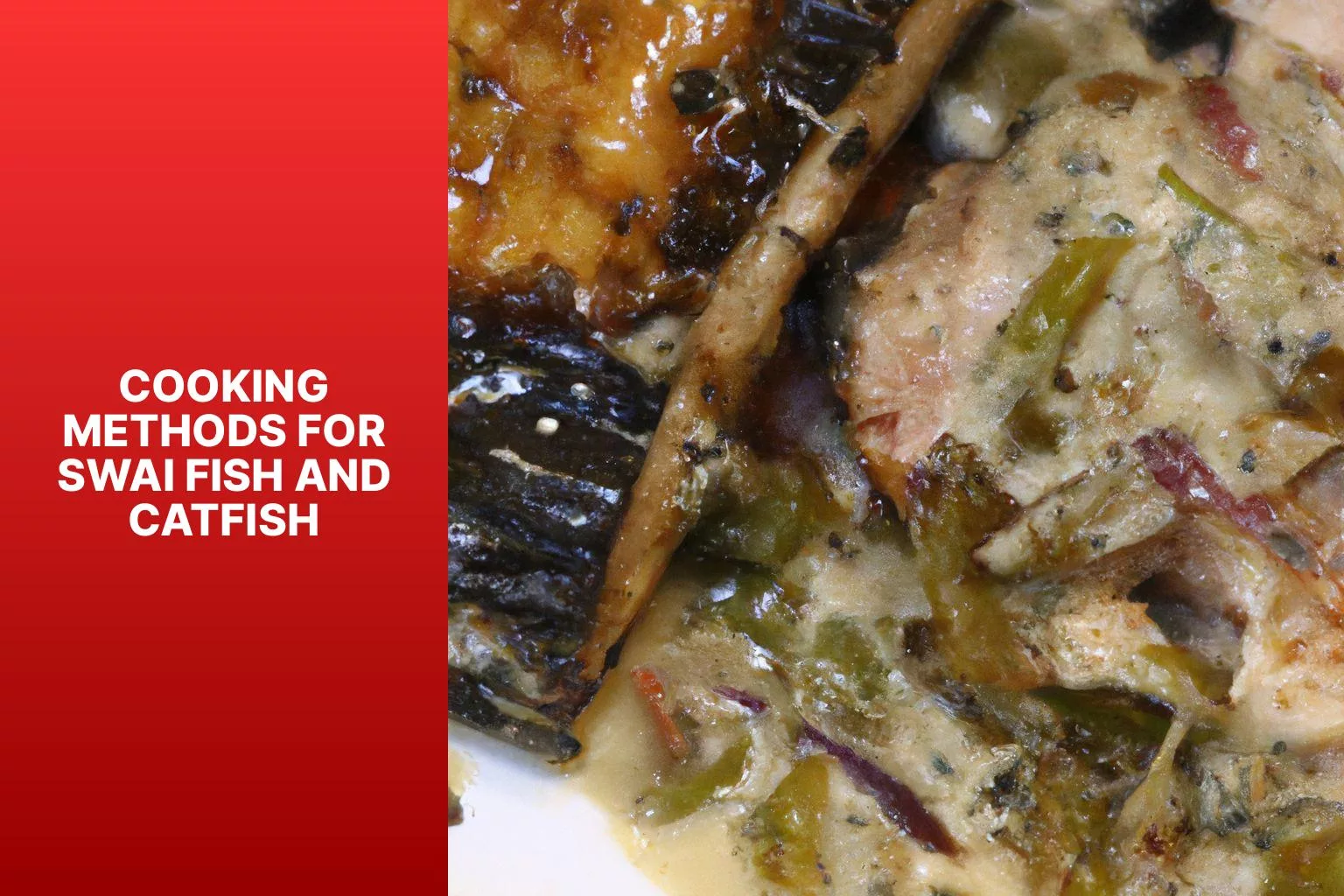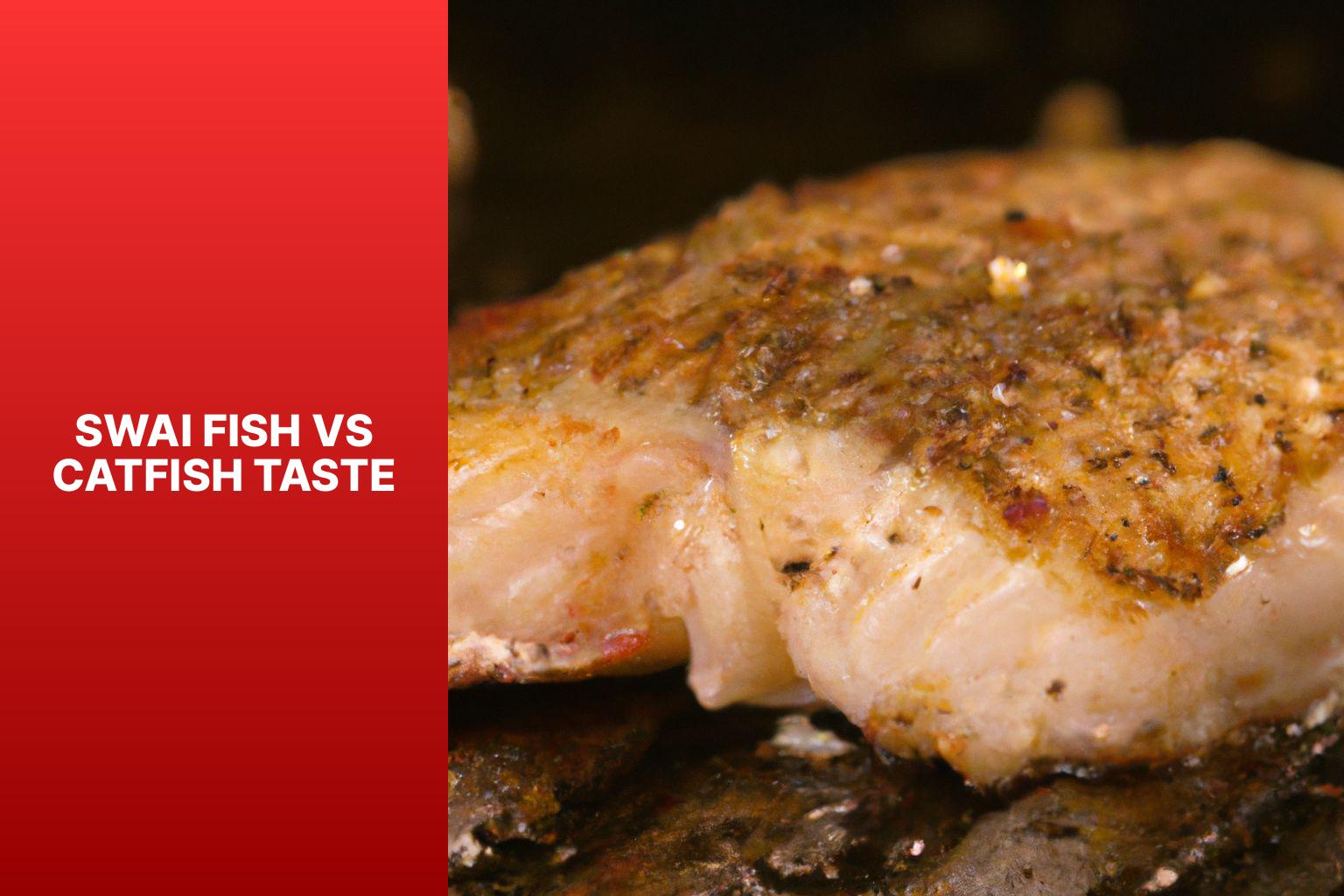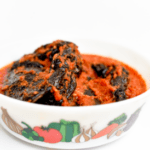Swai fish and catfish are two popular choices in the culinary world, known for their distinct taste characteristics. Understanding the differences in taste can help you choose the right fish for your meal.
When it comes to the taste of swai fish, it is characterized by:
- Mild and Delicate Flavor: Swai fish has a subtle, mild flavor that is not overpowering.
- Tender and Moist Texture: Its flesh is tender and moist, making it enjoyable to eat.
- Low Fishiness: Swai fish has a minimal fishiness taste, making it appealing to those who prefer milder flavors.
On the other hand, catfish has its own set of taste characteristics:
- Mild and Mildly Sweet Flavor: Catfish has a mild flavor with a hint of sweetness.
- Firm and Meaty Texture: Its flesh is firm and meaty, giving a satisfying bite.
- Moderate Fishiness: Catfish has a slightly stronger fishiness compared to swai fish, but it is still within a moderate range.
When comparing the taste of swai fish and catfish, there are a few factors to consider:
- Flavor Intensity: Swai fish has a milder taste compared to catfish.
- Texture: Catfish has a firmer, meatier texture compared to the tender texture of swai fish.
- Fishiness: Swai fish has a lower fishiness level compared to catfish.
To bring out the best flavors of swai fish and catfish, different cooking methods can be employed. Factors such as the source and quality of the fish, preparation and seasoning techniques, and cooking methods can greatly impact the taste of both swai fish and catfish. By considering these factors, you can create delicious and flavorful dishes with either of these fish varieties.
- Swai fish has a mild and delicate flavor, while catfish has a mild and mildly sweet flavor.
- Swai fish has a tender and moist texture, while catfish has a firm and meaty texture.
- Swai fish has low fishiness, while catfish has a moderate fishiness.
- The taste of swai fish and catfish can be compared based on flavor intensity, texture, and fishiness.
- The taste of swai fish and catfish can be affected by factors such as source and quality, preparation and seasoning, and cooking techniques.
Taste Characteristics of Swai Fish
Discover the delightful taste characteristics of Swai fish that make it a unique choice for seafood enthusiasts.
Dive into the sub-sections that explore the mild and delicate flavor, tender and moist texture, and low fishiness of this delicious fish.
We will uncover its mildly sweet flavor, firm and meaty texture, as well as its moderate fishiness, providing an overview of what makes Swai fish a delectable option for your culinary adventures.
Mild and Delicate Flavor
The mild and delicate flavor of swai fish is one of its distinguishing characteristics. Here are some points to consider:
- Subtle taste: Swai fish has a mild and neutral flavor that is not overpowering. It allows for versatile seasoning and pairs well with a variety of ingredients.
- Gentle sweetness: The delicate flavor of swai fish is accompanied by a mild and slightly sweet taste. This adds a pleasant hint of sweetness to dishes without being overpowering.
- Enhances other flavors: Due to its mild taste, swai fish acts as a canvass for other flavors. It absorbs the flavors of seasonings and sauces, making it an excellent choice for various culinary creations.
- Adaptable to different cooking methods: Whether it’s grilled, baked, pan-fried, or used in soups and stews, the mild flavor of swai fish remains intact, making it a versatile option for different cooking techniques.
A true story that showcases the appeal of swai fish’s mild and delicate flavor is when a chef served it at a dinner party. The guests were impressed by the subtle yet distinct taste of the swai fish dish. The delicate flavor allowed the accompanying ingredients and spices to shine through, creating a harmonious and enjoyable dining experience. Everyone appreciated the versatility of swai fish and how its mildness complemented the overall flavor profile of the dish.
Tender and Moist Texture
When it comes to the taste characteristics of fish, texture plays a vital role. Both the swai fish and catfish have their own distinct textures that contribute to their overall taste experience.
1. The swai fish is renowned for its tender and moist texture. The flesh of the swai fish is delicate and easily breaks apart, making it a popular choice for dishes like fish tacos or fish fillets. The moistness of the fish adds to its succulence and enhances the overall eating experience.
2. On the other hand, catfish has a firm and meaty texture. The flesh of the catfish is denser and holds its shape well during cooking. This texture makes catfish suitable for grilling, frying, or baking, as it doesn’t fall apart easily.
When preparing either swai fish or catfish, it’s crucial to consider the tender and moist texture and adjust the cooking method accordingly. For those who prefer a tender and moist fish, swai fish is an excellent option. On the other hand, catfish, with its firm and meaty texture, is better suited for dishes that require the fish to hold its shape.
To enhance the tender and moist texture of swai fish, it can be marinated before cooking to lock in moisture. Additionally, adding a citrus-based marinade or simply seasoning it with salt and pepper can also elevate its taste.
The tender and moist texture of swai fish enhances its overall taste and makes it a popular choice among seafood enthusiasts. By carefully considering the texture when preparing swai fish or catfish, you can ensure a delightful dining experience.
Low Fishiness
Swai fish and catfish are both popular choices when it comes to seafood options. While they have some similarities in taste characteristics, they also have distinct differences. One factor to consider is the level of low fishiness in these two fish varieties.
1. Low fishiness: Swai fish is known for its low fishiness, making it appealing to those who prefer a milder taste. With its mild and delicate flavor profile, swai fish offers a pleasant eating experience without an overpowering fishy taste. This characteristic also makes it a versatile fish that can easily be incorporated into various dishes.
When it comes to catfish, it has a moderate fishiness compared to swai fish. While not as strong as some other fish varieties, catfish does have a slightly more pronounced fishy flavor. This can vary depending on the freshness and preparation of the catfish.
If you’re looking for a fish with low fishiness, swai fish would be the better option between the two. It provides a milder flavor that is suitable for those who prefer a subtler taste in their seafood.
Incorporating swai fish into your culinary repertoire can offer a delightful dining experience with its low fishiness. Whether you grill, bake, or pan-fry it, swai fish will bring a mild and delicious flavor to your dishes.
Taste Characteristics of Catfish
When it comes to the taste of catfish, there are some standout characteristics that differentiate it from other fish. In this section, we will dive into the nuances of catfish taste. From its mild and delicate flavor to its tender and moist texture, catfish offers a unique culinary experience. We’ll also discover how catfish strikes a balance between mild and mildly sweet flavors, while maintaining a firm and meaty texture. Prepare to explore the world of catfish taste like never before!
Mild and Mildly Sweet Flavor
The mild and mildly sweet flavor of catfish is often described as versatile and appealing to many seafood lovers. Unlike other types of fish, catfish does not have a strong or overpowering taste. Its mildness allows it to easily absorb different flavors and seasonings, while the subtly sweet flavor adds a hint of sweetness to enhance its overall profile. When cooked properly, catfish remains tender and juicy, with a firm and meaty texture.
The mild and mildly sweet flavor of catfish makes it a popular choice for those who prefer a more subtle taste in their seafood dishes. Whether it’s grilled, fried, or baked, catfish can be enjoyed in various ways, paired with different ingredients and seasonings to suit individual preferences. Its mildness also makes it an excellent option for newcomers to fish or those who are not fond of strongly flavored seafood. Whether you crave a light and delicate fish dish or want to experiment with flavors, the mild and mildly sweet flavor of catfish will surely satisfy your taste buds.
Firm and Meaty Texture
Swai fish and catfish both possess distinct taste characteristics, with their texture playing a major role. Catfish, in particular, stands out for its firm and meaty texture, which provides a delightful bite when cooked. This texture remains intact even after being subjected to cooking methods such as frying or grilling. Unlike other types of fish, catfish holds up extremely well and does not easily fall apart, making it an excellent choice for a wide range of recipes.
The firmness of catfish lends itself to various cooking techniques. It can be grilled to perfection, retaining its shape and juiciness throughout the process. Additionally, catfish can be breaded and fried, resulting in a crispy exterior while maintaining its tender and moist interior. Its firm texture also adds substance and enhances the overall experience when used in stews or chowders.
On the other hand, when comparing the texture of swai fish and catfish, it becomes evident that catfish boasts a firmer and meatier texture. Swai fish, in contrast, has a softer and more delicate texture. This contrast allows individuals to choose based on their personal preferences. Whether one prefers the firmness and meatiness of catfish or the tenderness of swai fish, both options provide unique experiences for seafood enthusiasts.
When cooking catfish, it is crucial to consider its firm texture to ensure that it is cooked properly. Overcooking can result in a dry and tough texture, so it is advisable to follow recommended cooking times and methods for optimal results. The firm and meaty texture of catfish enhances its appeal and contributes to its popularity among seafood lovers who seek a satisfying dining experience.
Moderate Fishiness
The swai fish and catfish can be compared and analyzed in terms of their moderate fishiness. These two fish have a similar level of fishiness, which can best be described as moderate. This means that they both possess a discernible fish flavor, but it is not overpowering or excessively intense. The moderate fishiness actually enhances the overall taste of these fish without overwhelming the palate.
The moderate fishiness of both swai fish and catfish offers a great deal of versatility when it comes to cooking methods and flavor combinations. These fish can be seasoned and marinated with a variety of herbs, spices, and sauces to complement their natural flavors. Whether grilled, baked, fried, or pan-seared, different textures and levels of crispiness can be achieved while still maintaining their moderate fishiness.
It is worth noting that the moderate fishiness may vary slightly based on the freshness and quality of the fish. Freshly caught swai fish and catfish are likely to have a milder fishiness compared to those that have been frozen or stored for a longer period.
In fact, swai fish and catfish are highly favored by seafood enthusiasts due to their mild and pleasant flavor profile. Their moderate fishiness adds depth and character to various dishes, making them an extremely versatile option in the kitchen.
Comparing the Taste of Swai Fish and Catfish
When it comes to the taste of swai fish versus catfish, it’s all about the flavor intensity, texture, and fishiness. Each sub-section of this article will dive into these aspects, giving you a tantalizing glimpse into the nuanced differences between these two popular fish varieties. Prepare your taste buds for a journey of culinary exploration as we examine the delectable world of swai fish and catfish, uncovering the subtle complexities that make each one a unique dining experience.
Flavor Intensity
HTML
To compare the flavor intensity of Swai fish and Catfish, we can consider their taste characteristics.
| Swai Fish | Catfish | |
|---|---|---|
| 1 | Mild and delicate flavor | Mild and mildly sweet flavor |
| 2 | Moderate fishiness | Firm and meaty texture |
| 3 | Moderate fishiness |
In terms of flavor intensity, Swai fish has a mild and delicate flavor, while Catfish has a mildly sweet flavor. Both types of fish have their own unique taste profile.
The flavor intensity of Swai fish is low, making it perfect for those who prefer a milder taste. On the other hand, Catfish has a slightly stronger flavor compared to Swai fish, but it is still considered mild.
When it comes to choosing between Swai fish and Catfish based on flavor intensity, it ultimately depends on personal preference. If you enjoy a very mild and delicate flavor, Swai fish would be a suitable choice. If you prefer a slightly stronger but still mild flavor, Catfish would be a good option.
Texture
The texture of swai fish and catfish plays an important role in their taste and culinary experience. Here is a comparison of the texture of these two types of fish:
| Swai Fish | Catfish |
| Mild and tender | Firm and meaty |
| Moist and juicy | Texture |
Swai fish has a mild and tender texture, making it easy to chew and enjoy. Its flesh is moist and juicy, adding to its overall succulence. On the other hand, catfish has a firm and meaty texture, giving it a substantial bite. The texture of catfish allows it to hold up well to various cooking methods and retain its shape and consistency.
The difference in texture between swai fish and catfish can influence the cooking techniques used for each. Swai fish is more delicate and can be easily overcooked, so it is often best suited for quick cooking methods such as sautéing or grilling. Catfish, with its firmer and meatier texture, can withstand longer cooking times and is a popular choice for frying or baking.
When choosing between swai fish and catfish, consider your preference for texture. If you enjoy a more delicate and tender texture, swai fish may be the better option. If you prefer a firmer and meatier texture, catfish would be a great choice. Experiment with different cooking methods and flavors to enhance the texture of these fish varieties and create delicious meals.
Remember, always ensure the fish is sourced from reputable suppliers and cooked properly to maintain its texture and taste. Enjoy exploring the unique textures of swai fish and catfish in your culinary endeavors.
Fishiness
The sub-topic “Fishiness” can be expanded with the following information:
|
Fishiness can be subjective and can depend on personal preferences. Some people enjoy a stronger fish flavor, while others prefer a milder taste.
To reduce the fishiness in both swai fish and catfish, various cooking methods can be employed. These methods include:
|
It’s important to note that the freshness and quality of the fish can also affect its fishiness. Fresh fish tends to have a milder taste, while older fish may have a stronger fishy flavor.
When considering fishiness in swai fish and catfish, it’s important to consider personal taste preferences and cooking methods to enhance or reduce the fishiness to suit individual preferences.
Cooking Methods for Swai Fish and Catfish


Photo Credits: Kabaia.Com by Aaron Hill
Both swai fish and catfish can be cooked using various methods. Here are some popular cooking methods for each:
Swai Fish:
- Baking: Baking swai fish is a simple and healthy method. Season the fish with herbs, spices, and lemon juice, then bake it in the oven until it is cooked through and flakes easily.
- Grilling: Grilling swai fish gives it a smoky and charred flavor. Brush the fish with marinade or olive oil, season it with spices, and grill it over medium heat until it is cooked and has grill marks.
- Pan-Frying: Pan-frying swai fish creates a crispy exterior. Dredge the fish in flour or breadcrumbs, season it, and pan-fry it in oil or butter until it is golden brown and cooked.
- Steaming: Steaming swai fish is a gentle and healthy cooking method. Place the fish on a steaming rack, season it with herbs and spices, and steam it until it is tender and cooked through.
- Stir-Frying: Stir-frying swai fish with vegetables and sauce creates a flavorful and quick meal. Cut the fish into bite-sized pieces, stir-fry it with vegetables and sauce in a hot pan, and cook until it is opaque and tender.
Catfish:
- Deep-Frying: Deep-frying catfish results in a crispy and flavorful dish. Coat the fish in a seasoned batter or cornmeal, deep-fry it until it is golden brown and cooked through, and serve it with dipping sauces.
- Blackened: Blackening catfish involves coating it with a spicy seasoning blend and searing it in a hot skillet. This method creates a flavorful crust on the fish.
- Grilling: Grilled catfish has a smoky flavor and is easy to prepare. Brush the fish with marinade or oil, season it with spices, and grill it over medium heat until it is cooked and has grill marks.
- Baking: Baking catfish is a simple and healthy method. Season the fish with herbs, spices, and lemon juice, then bake it in the oven until it is cooked through and flakes easily.
- Poaching: Poaching catfish in flavorful liquid helps keep it moist. Simmer the fish in a seasoned broth or court bouillon until it is cooked and tender.
These cooking methods can bring out the best flavors and textures in both swai fish and catfish, allowing you to enjoy them in various delicious ways.
Factors Affecting the Taste of Swai Fish and Catfish
When it comes to the taste of swai fish and catfish, several factors come into play. In this section, we will uncover the secrets behind what influences the flavor of these delectable fishes. From the source and quality of the fish to the way it is prepared and seasoned, and even the cooking techniques used, each sub-section holds vital clues to understanding what sets these two apart in terms of taste. Brace yourself for a tantalizing journey into the world of culinary exploration!
Source and Quality
When considering the source and quality of swai fish and catfish, the following factors play a significant role:
| 1. Farming vs. Wild-caught |
| Swai fish is mainly farmed, while catfish can be both farmed and wild-caught. Farming practices can vary, so it is crucial to research the specific farm or supplier to ensure sustainable and responsible source and quality of farming methods are employed. |
| 2. Water Quality |
| Both swai fish and catfish are influenced by the source and quality of the water they inhabit. Clean and well-maintained water sources contribute to better tasting fish. For farmed fish, the source and quality of the water and filtration systems used by the farm are important considerations. |
| 3. Feed |
| The type of feed given to swai fish and catfish can impact their taste. High-quality feeds that are balanced and free from contaminants contribute to better-tasting fish. |
| 4. Processing methods |
| The handling and processing of swai fish and catfish post-harvest can affect their source and quality. Proper processing techniques, including appropriate chilling and packaging, help maintain the freshness and taste of the fish. |
When selecting swai fish or catfish, it is essential to consider the source and quality of the fish, whether it is farmed or wild-caught, the source and quality of the water they come from, the feed they are given, and the processing methods employed. By taking these factors into account, you can ensure that you are choosing high-quality fish that will enhance your culinary experience.
Suggestions: When purchasing fish, opt for reputable suppliers with transparent information about their sourcing and quality standards. Look for certifications such as the Marine Stewardship Council (MSC) for wild-caught fish or Best Aquaculture Practices (BAP) for farmed fish. Consider supporting local and sustainable fisheries to promote responsible fishing practices and help protect the environment.
Preparation and Seasoning
-
Thaw the fish: If using frozen fish, thaw it in the refrigerator overnight. This prevents any potential bacterial growth and ensures even cooking.
-
Cleaning the fish: Rinse the fish under cold water to remove any debris or scales. Pat it dry with paper towels.
-
Seasoning: Rub the fish with your desired seasonings such as salt, pepper, garlic powder, or lemon juice. Alternatively, marinate the fish in your favorite marinade for added flavor.
-
Resting: Allow the fish to rest at room temperature for about 15 minutes. This allows the flavors to penetrate the flesh.
-
Cooking methods: Choose your preferred cooking method, whether it’s baking, grilling, frying, or broiling. Adjust the cooking time and temperature according to the thickness of the fish fillets.
-
Monitoring doneness: Check the internal temperature of the fish using a meat thermometer. The fish is cooked when it reaches an internal temperature of 145°F (63°C).
Remember to handle raw fish properly, clean and sanitize all utensils and surfaces, and follow food safety guidelines to prevent cross-contamination. Experiment with different seasonings and methods to find your preferred flavor profile for swai fish and catfish. Enjoy a delicious and well-prepared meal!
Cooking Techniques
There are several different cooking techniques that can be utilized when preparing Swai Fish and Catfish. These techniques have the power to influence the taste and texture of the fish.
Below is a table outlining some common cooking techniques for Swai Fish and Catfish:
| Swai Fish | Catfish |
|---|---|
| Baking | Frying |
| Grilling | Blackened |
| Broiling | Grilling |
| Poaching | Steaming |
| Steaming | Baking |
These cooking techniques can be employed to enhance the natural flavors of both Swai Fish and Catfish. Baking and poaching, for example, can aid in retaining the moisture of the fish while adding subtle flavors. On the other hand, frying and grilling can provide a crispy exterior and imbue a smoky flavor to the fish.
When selecting a cooking technique, it is important to consider the desired outcome and the flavors you wish to bring out in the fish. Each technique can offer a distinct taste and texture, so it is crucial to experiment and discover what works best for your preferences.
History has demonstrated that different cooking techniques have been employed throughout time to create distinct and delectable dishes. From ancient civilizations to modern culinary practices, cooking techniques have evolved and adapted to the available ingredients and desired flavors. By comprehending and utilizing these techniques, we can continue to explore and relish the diverse tastes that different foods have to offer.
Some Facts About Swai Fish vs Catfish Taste:
- ✅ Swai fish and catfish have similar flaky texture and mildly sweet taste. (Source: MedicineNet)
- ✅ Catfish is a dark grey colored fish, while swai fish is commonly found in South Asia and not actually a catfish. (Source: MedicineNet)
- ✅ Catfish can be prepared in various ways including baking, roasting, boiling, steaming, or frying. (Source: MedicineNet)
- ✅ Swai fish is known as Vietnamese catfish, iridescent shark, and basa. (Source: MedicineNet)
- ✅ Swai fish is cheaper than catfish but has a similar taste and texture. (Source: MedicineNet)
Frequently Asked Questions
What is the difference in taste between swai fish and catfish?
Swai fish and catfish have similar tastes, with a mildly sweet flavor and a flaky texture. Both can be enjoyed with Asian sauces or spicy flavors.
Are swai fish and catfish regulated differently by the U.S. FDA?
Yes, catfish in the U.S. is regulated by the U.S. FDA, ensuring the absence of bacteria or disease. However, swai fish, being imported from South Asian countries, may not be regulated in the same way.
Is swai fish a good alternative to more expensive fish?
Yes, swai fish can be a more affordable option compared to other types of fish. It has a similar taste and texture to catfish, making it a good substitute in various recipes.
Where is swai fish commonly found?
Swai fish is commonly found in South Asian countries such as Vietnam, Cambodia, Laos, and Thailand. It is often raised in cages in rivers in these regions.
How are catfish in the U.S. farmed?
Catfish in the U.S. are typically farmed in large ponds or caught fresh from North American river deltas. These fish farms are highly regulated to ensure the fish are not contaminated.
What are the potential health risks associated with swai fish?
Swai fish from South Asian fisheries may carry a higher risk of contamination as they are not as regulated as catfish farms in the U.S. The U.S. FDA has issued import alerts for misbranded seafood, including swai, to address potential health risks.




